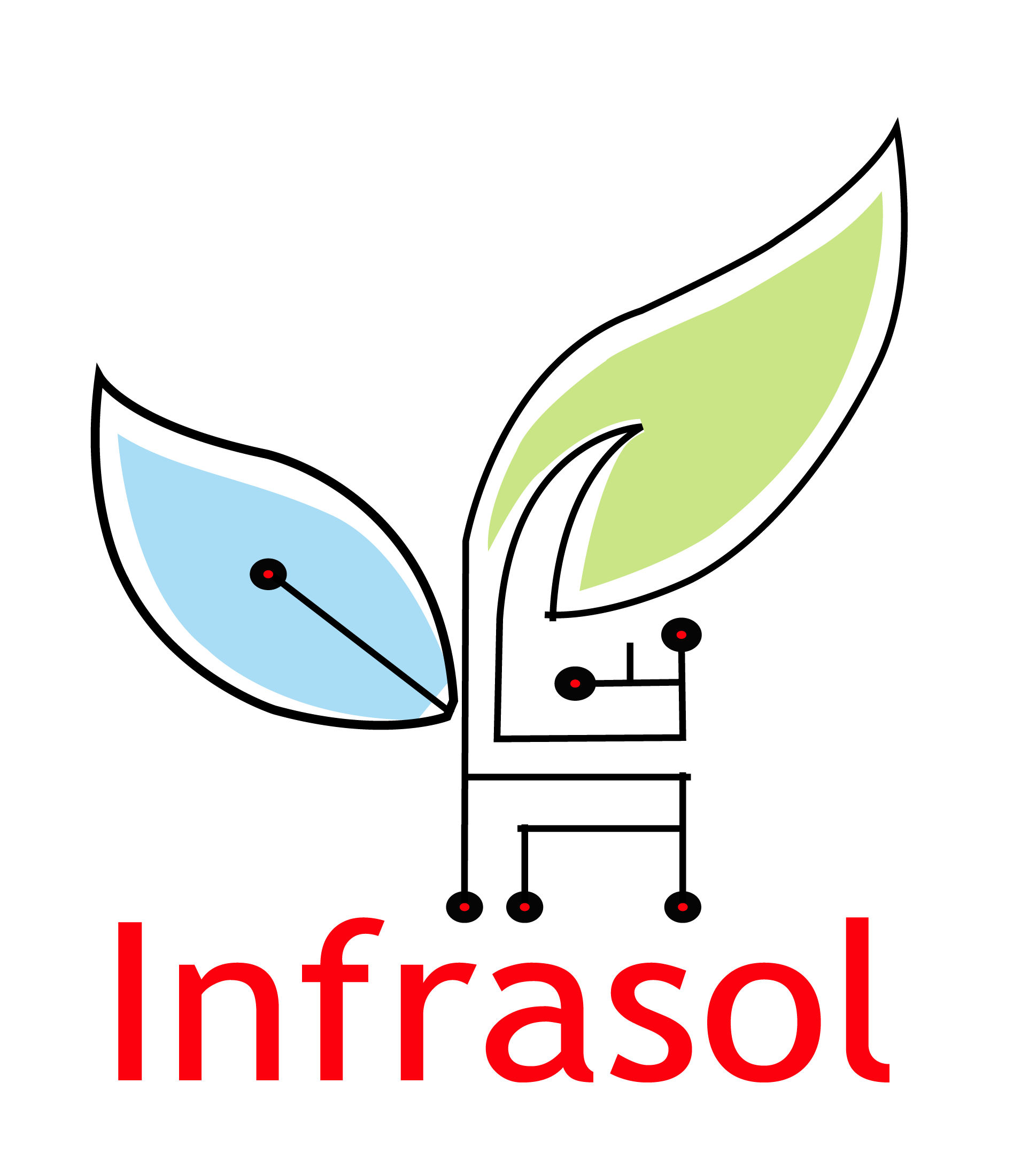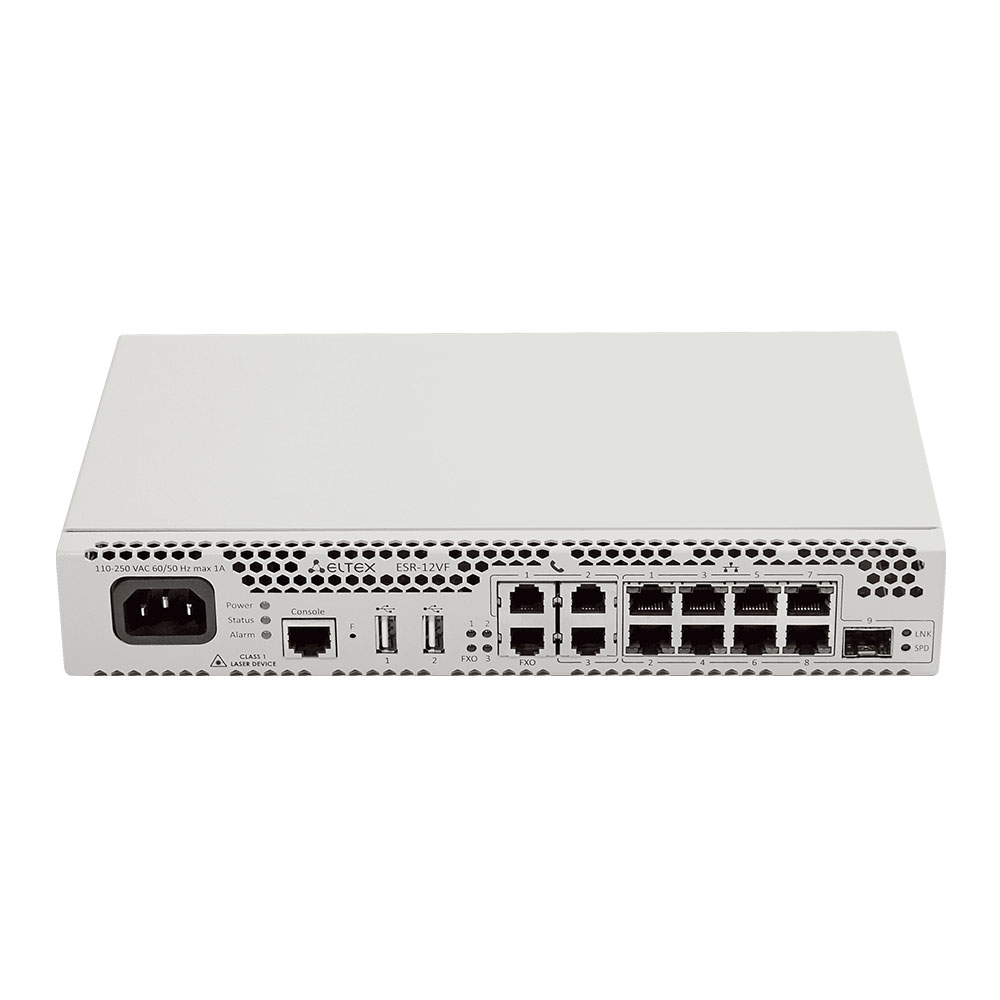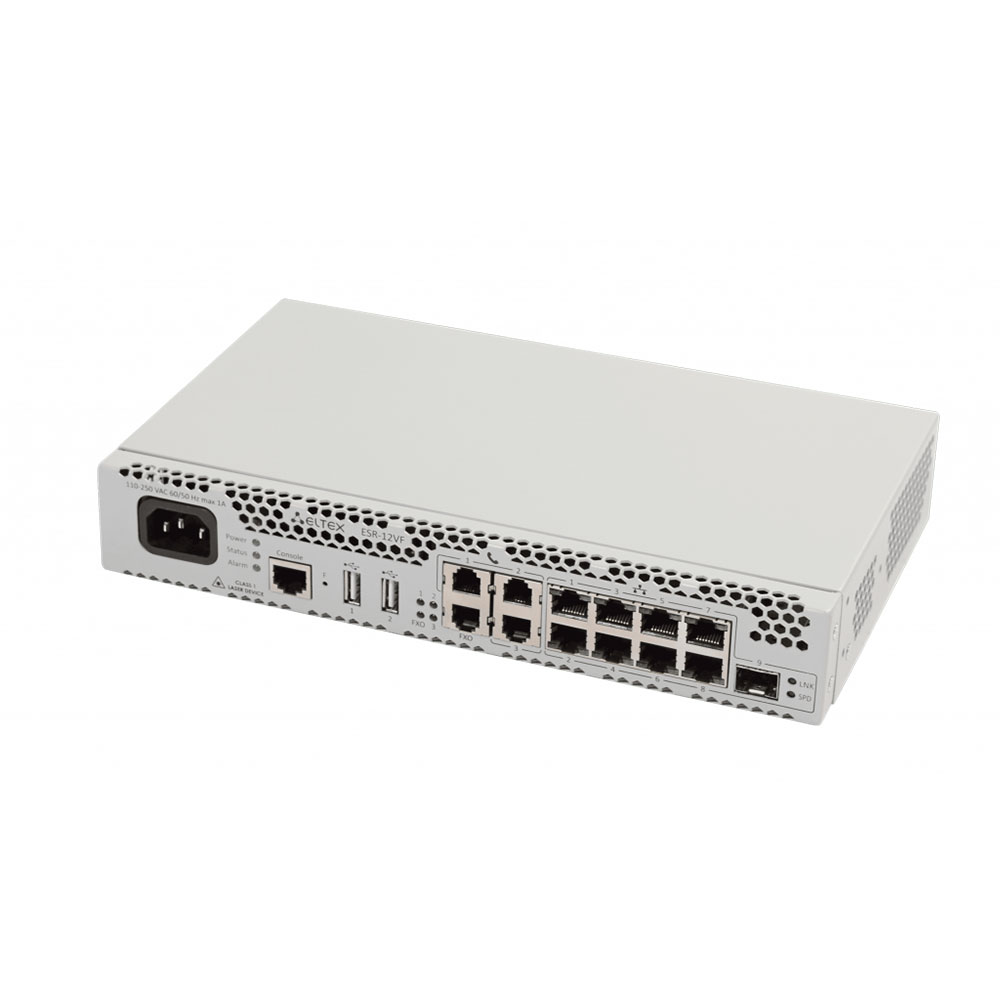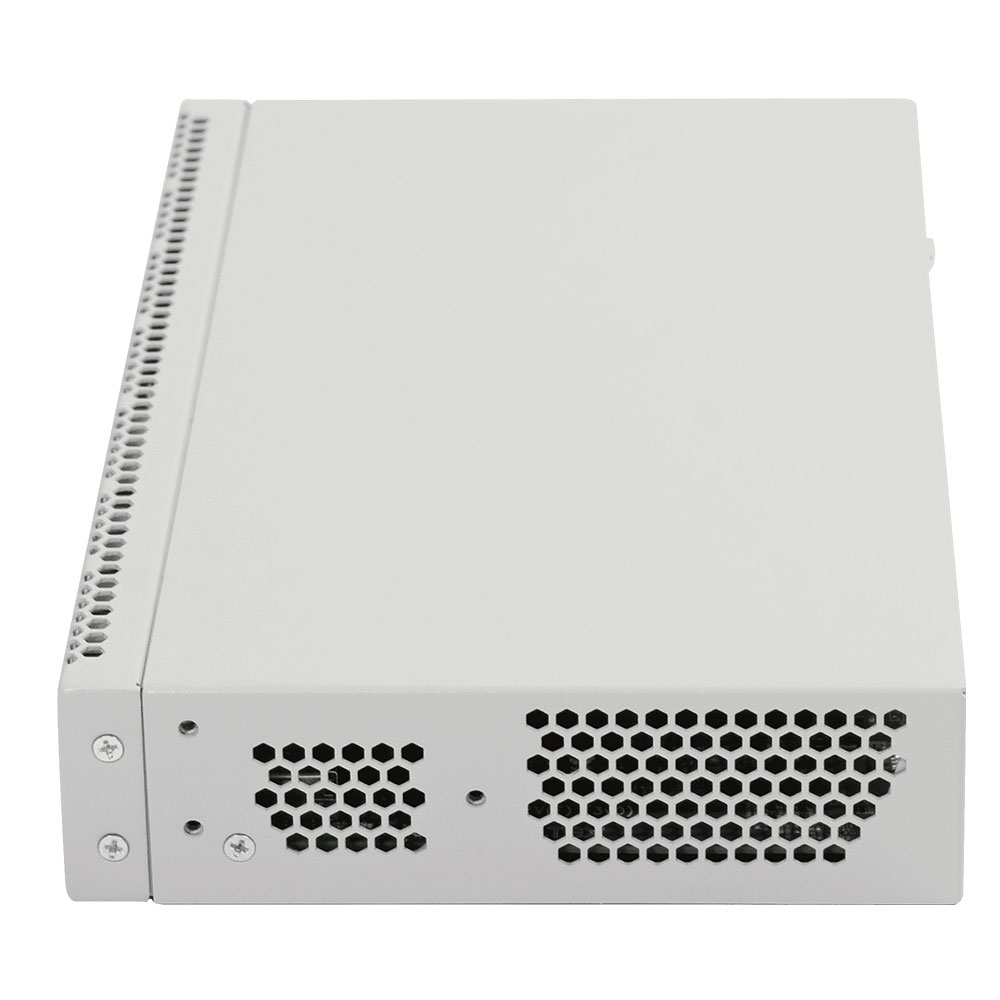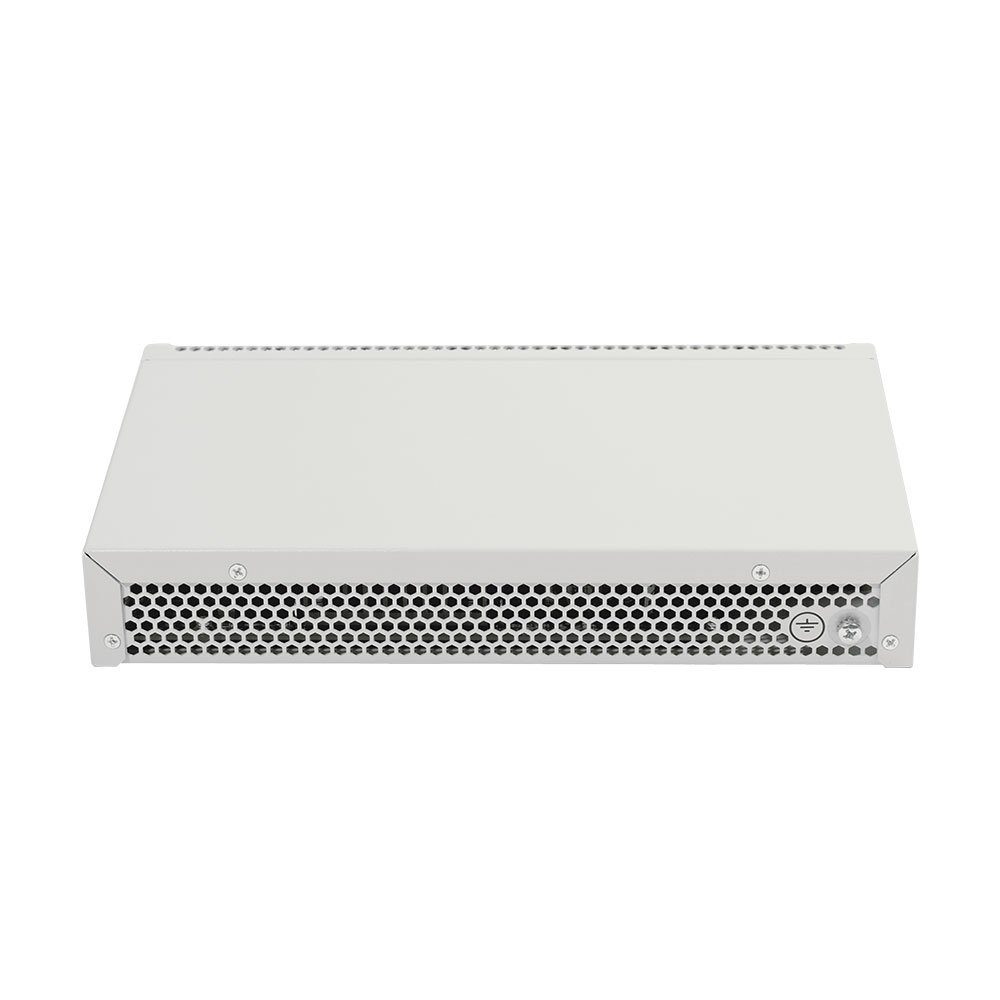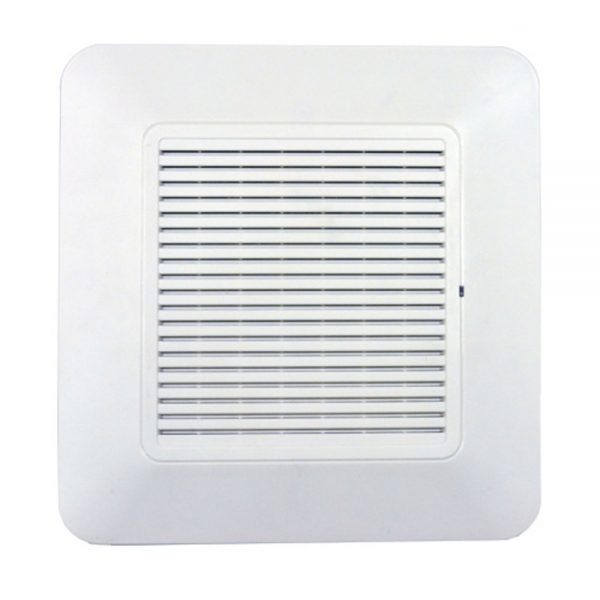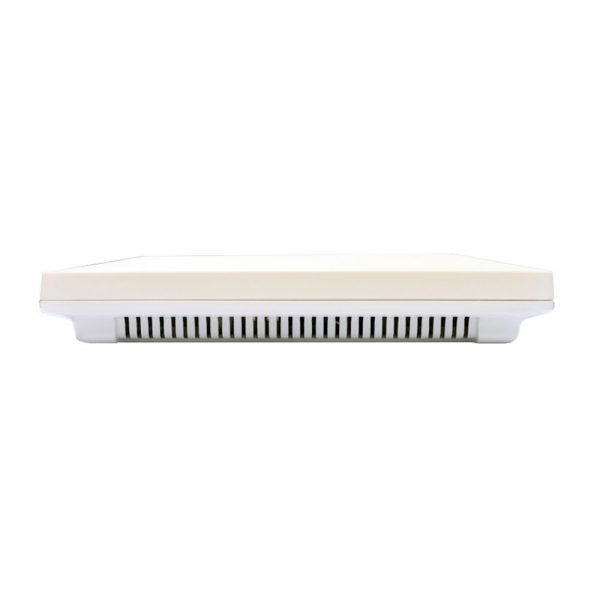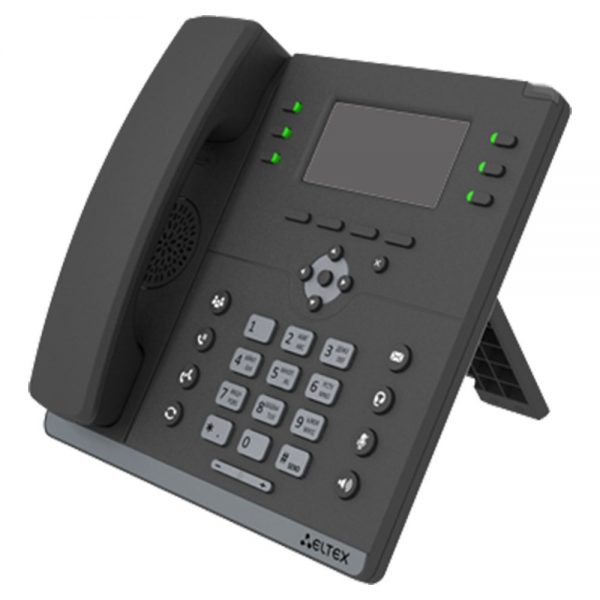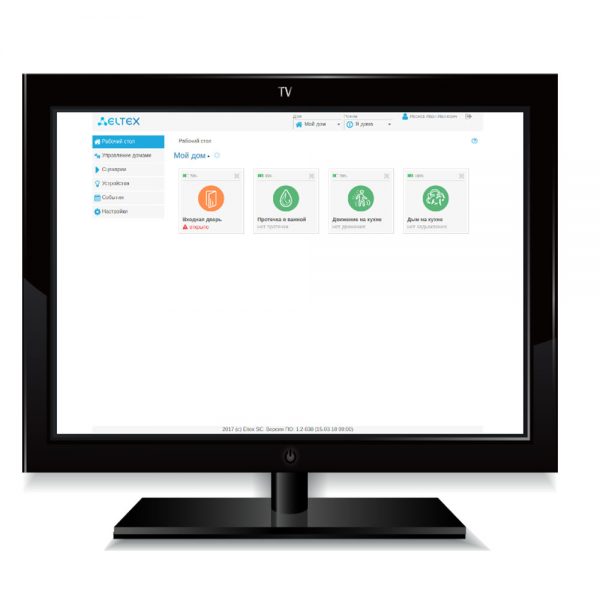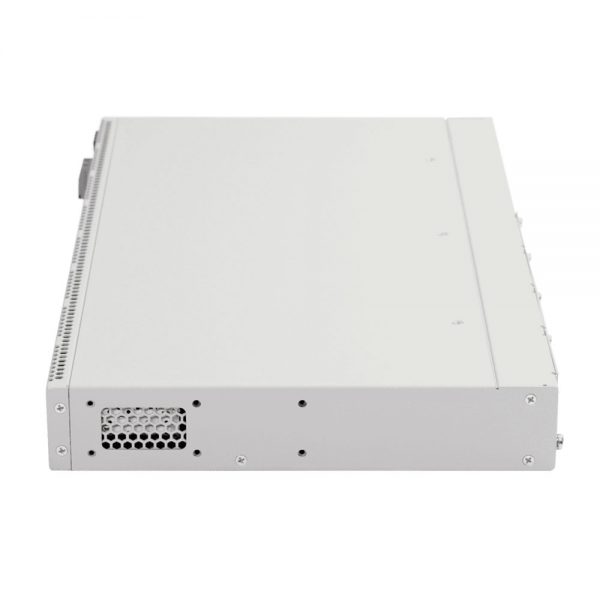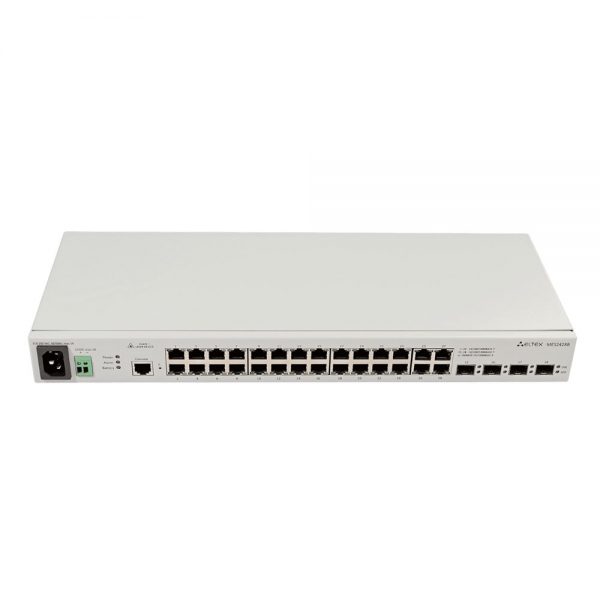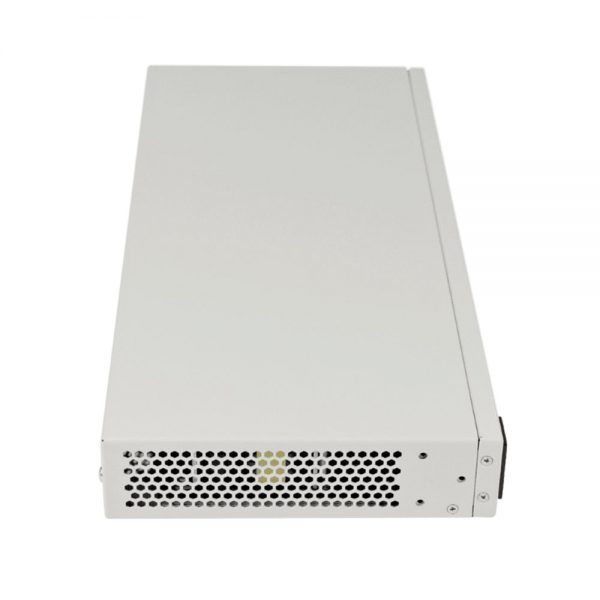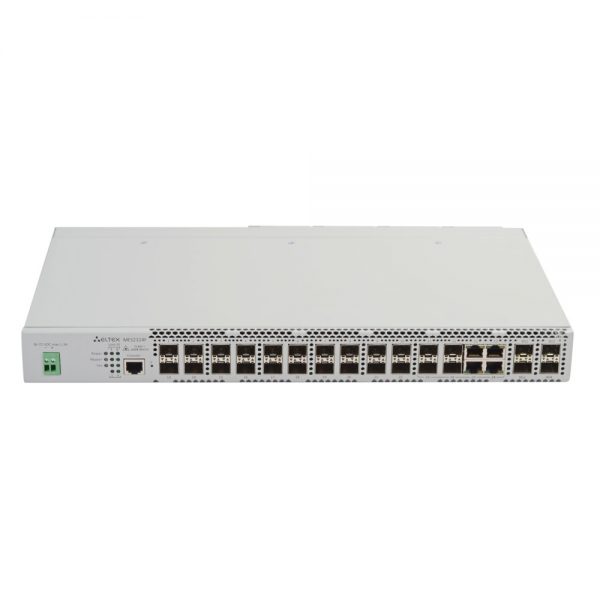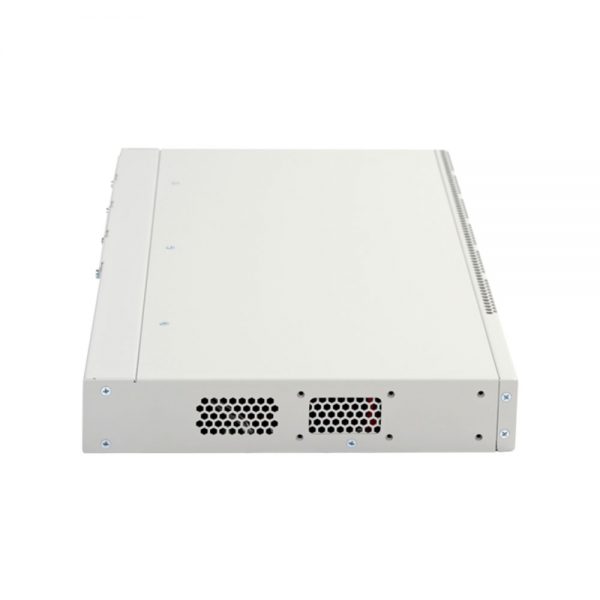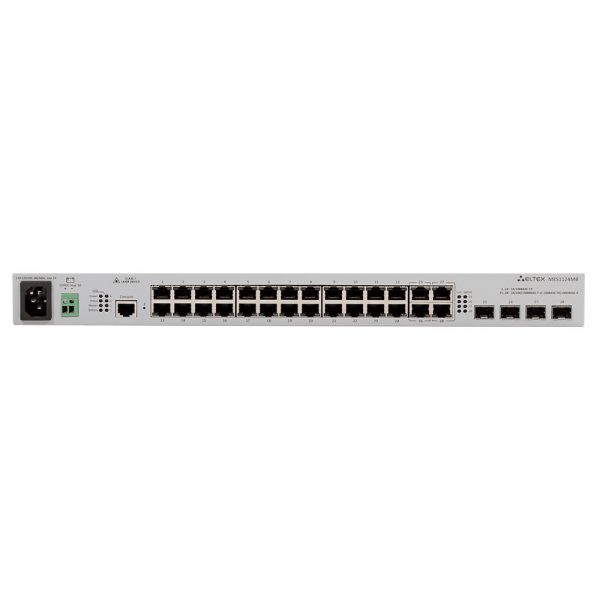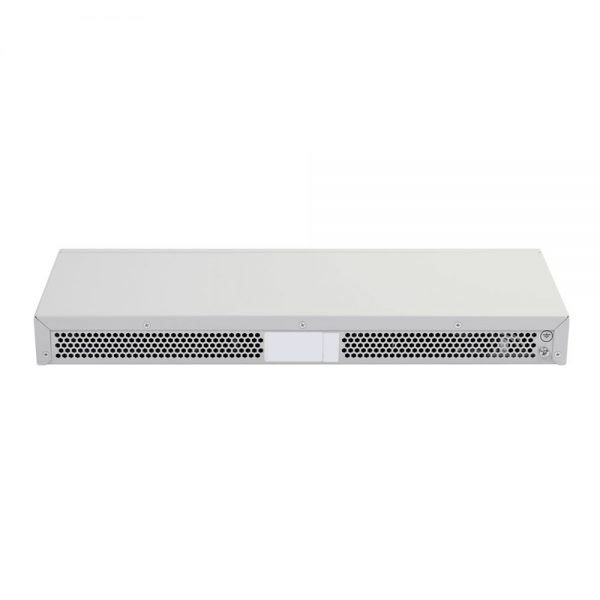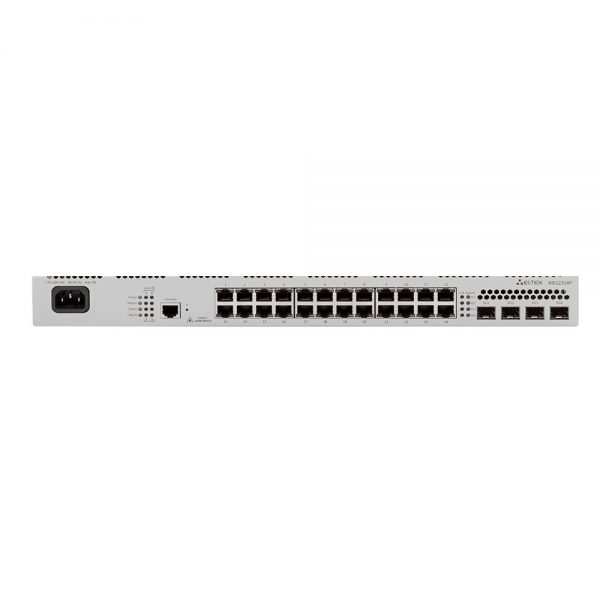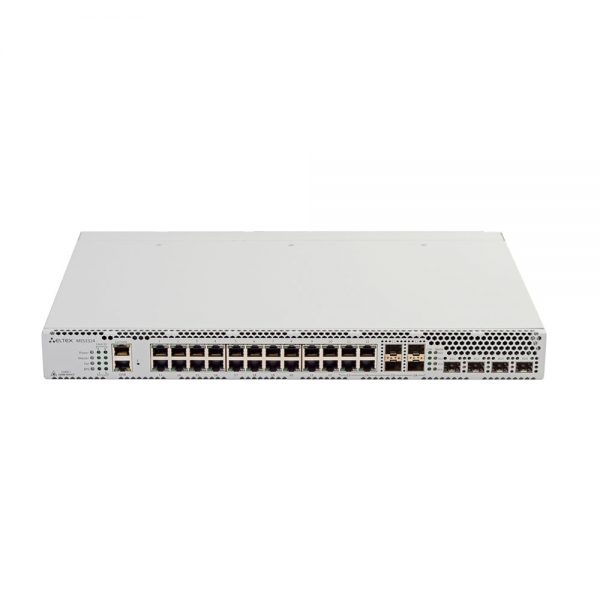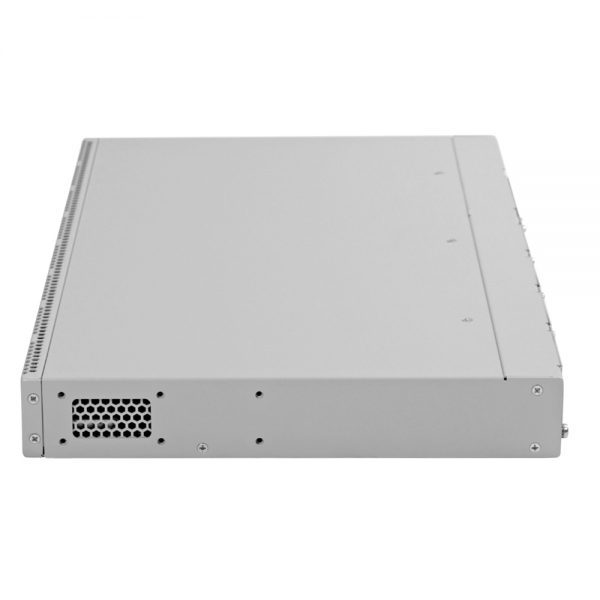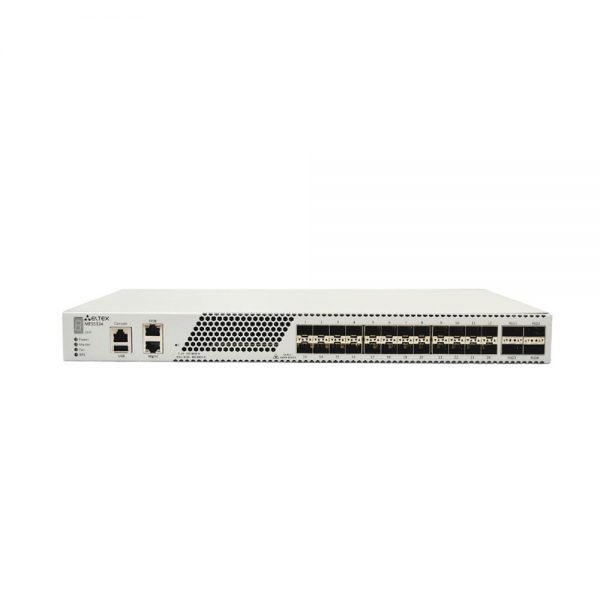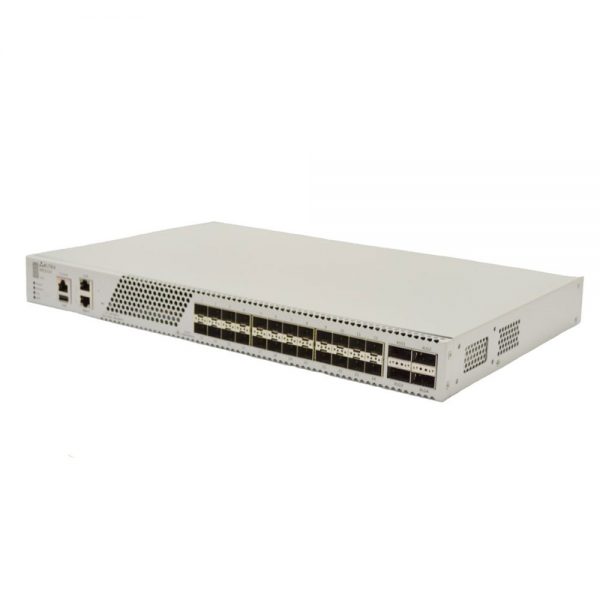– 8хEthernet 10/100/1000BASE-T
– 1xEthernet 10/100/1000BASE-X
– 1xConsole (RJ-45)
– 3xFXS
– 1xFXO
– 2хUSB 2.0
Plug-in interfaces
– USB 3G/4G/LTE modem
VPN clients
– PPTP
– PPPoE
VPN server
– L2TP
– PPTP
– OpenVPN
Tunneling
– L2/L3 GRE
– IPIP
– L2TPv3
– Logical Tunnel (inter VRF-lite routing)
L2 functions
– Packet switching (bridging)
– STP, RSTP, MSTP 802.1d (only ESR-1000)
– LAG/LACP (802.3ad)
– VLAN (802.1Q)
– Port Isolation (only ESR-1000, ESR-1200)
– Private VLAN Edge (PVE) (only ESR-1000, ESR-1200)
– Logical interfaces
– LLDP
– VLAN based MAC
L3 functions (IPv4/IPv6)
– NAT, Static NAT, ALG addresses translation
– Static routes
– Dynamic routing protocols RIPv2, OSPFv2/v3, BGP
– Prefix-List
– VRF Lite
– Policy Based Routing (PBR)
– BFD for BGP, OSPF, static routes
IP addressing management (IPv4/IPv6)
– Static IP addresses
– DHCP client
– DHCP Relay Option 82
– Embedded DHCP server (options: 43, 60, 61, 150)
– DNS resolver
Quality of Service (QoS)
– Up to 8 priority queues per port
– L2 and L3 traffic prioritization (802.1p, DSCP, IP Precedence)
– Queues overload management RED, GRED
– Port prioritizing, VLAN
– Resources of priority remarking
– Policy enforcement (policing)
– Bandwidth management (shaping)
– Hierarchical QоS
– Session marking
Network reliability assurance means
– VRRP v2,v3
– Route tracking based on VRRP state
– WAN interfaces load balancing, data stream redirection, failover in case of evaluation of channel quality
– Firewall sessions backup
BRAS (IPoE)1
– User termination
– White/black URL lists
– Limiting by traffic amount, by session time or by network applications
– HTTP/HTTPS Proxy
– HTTP/HTTPS Redirect
– Session accounting via Netflow protocol
– Interaction with ААА, PCRF
– Bandwidth management by offices, SSID and user sessions
– User authentication by MAC or IP address
Network security functions
– Network interfaces zoning
– Zone isolation, Firewall, data filtering rules
– IPSec:
– Policy-based and route-based modes
– DES, 3DES, AES, Blowfish, Camelia encryption algorithms
– IKE MD5, SHA-1, SHA-2 logs authentication
– Support for access control lists on the base of L2/L3 fields
– DoS/DDoS attacks defense
– Logging of attack events, rule triggering events
– Traffic filtering by applications
Monitoring and control
– Standard SNMP MIB, RMONv1 support
– Access level management
– In-built Zabbix agent
– Authentication via local user database by means of RADIUS, TACACS+, LDAP protocols
– Protection from configuration errors, automatic configuration recovery. Ability to reset configuration to default settings
– CLI management interfaces
– Syslog
– System resources usage monitoring
– Ping, traceroute (IPv4/IPv6), displaying information of packets in the console
– Firmware update, upload and download of configuration via TFTP, SCP, FTP, SFTP
– NTP
– Netflow v5/v9/v10 (URL statistics export for HTTP, host for HTTPS)
– Local control – console RS-232 (RJ-45)
– Remote control (IPv4/IPv6) – Telnet, SSH
– Service/processes information displaying Service quality monitoring functions (SLA)1
– Integration with Wellink wiSLA
– Load testing of channel capacity: up to 150 Mbps
– TWAMP support: up to 100 simultaneous tests
– Reflector: TWAMP, UDP-Echo, L2
– Amount of simultaneously controlled services: minimum 100
– TCP, HTTP, DNS services monitoring: up to 100 simultaneous tests
VoIP protocols
– SIP
Voice codecs
– G.711 a-law, µ-law
– G.723.1
– G.729 (A/B)
Fax transmission
– T.38 UDP Real-Time Fax
– a-law, µ-law G.711 pass-through
Voice standards
– VAD (Voice Activity Detection)
– CNG (Comfort Noise Generation)
– AEC (echo cancellation, G.165, G.168 recommendations)
DTMF
– DTMF signal detection and generation
– Transmission by INBAND, RFC 2833, SIP INFO
Connection types
– Static IP address
– DHCP client
Value Added Services
– Call Hold
– Call Transfer
– Call Waiting
– Call Forwarding on Busy (CFB)
– Call Forwarding on no Reply (CFNR)
– Call Forwarding Unconditional (CFU)
– Caller ID
– Caller ID Restriction (CLIR)
– Hotline/Warmline
– Call Group
– 3-Way conference
VoIP features
– Inner connection switching
– Operation without SIP server
– Flexible numbering plan
– Port configuration profiles
– Settings apply without a reboot
– IMS (3GPP TS 24.623) support for Hold, CW, 3Way-conference, Hotline services management
The feature set is available in 1.4.1 firmware version
1Activated by the license
